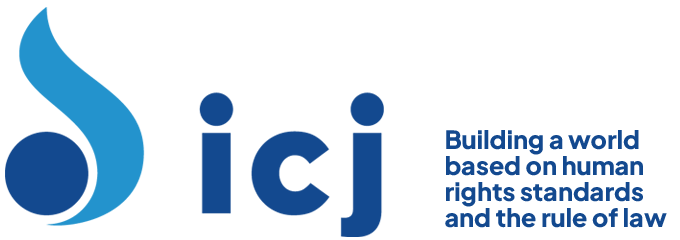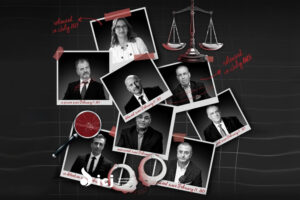Procedural Posture
Constitutional challenge. The respondents argued that Canada’s common law definition of marriage violated the Canadian Charter of Rights and Freedoms. The case was transferred from a lower trial court to the Divisional Court. The government appealed the Divisional Court’s opinion in the Court of Appeal for Ontario. On appeal the following groups intervened: the Association for Marriage and the Family in Ontario (in support of the government); the Interfaith Coalition on Marriage (in support of the government); the Canadian Human Rights Commission (in support of the respondents); Egale Canada (in support of the respondents); the Canadian Coalition of Liberal Rabbis for Same-Sex Marriage (in support of the respondents).
Facts
Two cases were joined and heard together by a panel of the Divisional Court. In the first, seven same-sex couples applied for civil marriage licences from the Clerk of the City of Toronto. Unsure of her ability to grant licences to same-sex couples, the Clerk held the licences in abeyance until a judicial ruling on the issue. The couples filed a complaint and their case was transferred to the Divisional Court. The Metropolitan Community Church of Toronto (MCCT) brought the second case. When the Office of the Registrar General refused to register same-sex marriages that MCCT had performed, it filed a complaint in the Divisional Court. In January 2001 these two cases were joined.
The Divisional Court unanimously held that the common law definition of marriage infringed the couples’ equality rights in a manner that was not authorised by the Charter. The Attorney General of Canada appealed to the Court of Appeal on the equality issue, and the couples cross-appealed on the issue of remedy. The couples asked the court to declare the common law unconstitutional and to redefine marriage, effective immediately.
Issue
Whether denial of marriage licences to same-sex couples was discriminatory under the Charter.
Domestic Law
Canadian Charter of Rights and Freedoms, Section 1 (limitations to rights and freedoms), Section 2 (freedom of conscience and religion), and Section 15 (equality before the law).
Constitution of Canada, Section 91 (granting the federal government exclusive jurisdiction over marriage and divorce).
Hyde v. Hyde and Woodmansee, English Courts of Probate and Divorce, United Kingdom, 1866 (defining common law marriage as the voluntary union for life of one man and one woman, to the exclusion of all others).
Law v. Canada (Minister of Employment and Immigration), Supreme Court of Canada, 1999 (providing a three-part test for equal protection inquiries under the Canadian Charter).
Egan v. Canada, Supreme Court of Canada, 1995 (establishing that sexual orientation constituted a prohibited ground of discrimination under Section 15 of the Canadian Charter of Rights and Freedoms).
R v. Oakes, Supreme Court of Canada, 1986 (setting out the analytical framework for determining whether restriction of a fundamental right could be justified under Section 1 of the Canadian Charter).
Reasoning of the Court
The Association for Marriage and the Family in Ontario (“The Association”, an intervener that supported the government on appeal), argued that marriage was a constitutionally entrenched term that could therefore be amended only by means of the formal amendment procedures. The court rejected this argument, citing section 91(26) of the Constitution Act of 1867, which gave Parliament the exclusive authority to regulate marriage as it saw fit. No constitutional amendment was necessary. Second, the Court dismissed the notion that marriage is an inflexible institution. The Association’s understanding of marriage, the Court argued, went against Canada’s jurisprudence of progressive constitutional interpretation.
The Court also rejected MCCT’s position that the prohibition of same-sex marriage violated its constitutional right to religious freedom. According to the Court, this case was about marriage as a legal institution and was “not about the religious validity or invalidity of various forms of marriage”.
The bulk of the opinion subjected the common law definition of marriage to analysis under Section 15(1) of the Charter, which guaranteed equality before the law and the right to equal protection and benefit of the law without discrimination based on personal characteristics. Such an inquiry required the court to follow a three-part test, as outlined in Law v. Canada (Minister of Employment and Immigration). The test considered: (1) whether the impugned law drew a formal distinction between the claimant and others based on personal characteristics; (2) whether the law subjected the claimant to differential treatment on the basis of one or more of the enumerated (or analogous) characteristics in the Charter; and (3) if so, whether the difference in treatment had the effect of confirming stereotypes or perpetuating the notion that the claimant, because of a personal characteristic, was “less capable or worthy of recognition or value as a human being or as a member of Canadian society”.
The Court found that the facts satisfied all parts of the test. The first inquiry required a distinction to be drawn. The common law, by limiting marriage to opposite-sex couples, clearly made a distinction between same-sex and opposite-sex couples. Likewise, the second inquiry was clearly satisfied. While the Charter enumerated specific classifications (race, national or ethnic origin, colour, religious, sex, age, mental or physical disability), the case of Egan v. Canada had established that sexual orientation was analogous to classifications listed in the Charter. Classifications based on sexual orientation therefore required equal protection.
The third factor asked, in effect, whether the law violated the claimants’ human dignity. Canadian courts understood the concept of human dignity to be a subjective matter. The Court quoted from Law v. Canada:
Human dignity means that an individual or group feels self-respect and self-worth. It is concerned with physical and psychological integrity and empowerment … Human dignity is harmed when individuals and groups are marginalized, ignored, or devalued, and is enhanced when laws recognize the full place of all individuals and groups within Canadian society. Human dignity within the meaning of the equality guarantee does not relate to the status or position of an individual in society per se, but rather concerns the manner in which a person legitimately feels when confronted with a particular law. Does the law treat him or her unfairly taking into account all of the circumstances regarding the individuals affected and excluded by the law?
Given the emphasis on the subjective effect of discrimination, it followed that the law did not have to be purposefully discriminatory. So long as claimants could show that their personal dignity had been compromised, then the law would not survive constitutional challenge. The Court outlined four contexts in which claimants could show that their dignity had been demeaned. These included, but were not limited to, situations characterised by: (1) any pre-existing disadvantage or stereotype, or the vulnerability of the claimants; (2) correspondence, or lack thereof, between the grounds of the claim and the needs, abilities or circumstances of the claimant or others situated similarly; (3) exclusion from the scope of inclusive ameliorative legislation of certain disadvantaged persons or groups in society; (4) the nature of the interest affected. The Court found each of these situations relevant here and concluded that the common law definition of marriage was in clear violation of human dignity.
Finally, having established that the prohibition on same-sex marriage clearly violated the right to equality before the law, the Court addressed Section 1 of the Charter. Under Section 1, a law in violation of Section 15(1) could be upheld if it was within “reasonable limits prescribed by law as can be demonstrably justified”. Under R v. Oakes the objective of the law had to be pressing and substantial and the means chosen to achieve the objective had to be reasonable and demonstrably justifiable in a free and democratic society. This required that the violation of rights was rationally connected to the objective of the law; that the law minimally impaired the Charter guarantee; and that the effect of the law and its objective were proportional, so that attainment of the objective was not outweighed by abridgment of the right.
The government proffered three objectives of the common law definition of marriage: it united the opposite sexes, encouraged childbirth and childrearing, and encouraged companionship. The Court found that the first objective favoured opposite-sex couples over same-sex couples. This violated human dignity and therefore failed. The Court also rejected the second objective, because same-sex couples were equally able to raise children and to bring children into their unions. Most importantly, however, the procreation argument failed, because the prohibition of same-sex marriage was unrelated to the birth rate of women in opposite-sex marriages. Although the Court considered companionship, the third objective raised by the government, to be a laudable goal, it held that “encouraging companionship cannot be considered a pressing and substantial objective of the omission of the impugned law”. Because the Court found no valid objective, it ruled that the common law definition of marriage was not saved by a Section 1 analysis. The Court ruled that same-sex marriages must be recognised and performed in Ontario.
Postscript
In 2005 Canada enacted the Civil Marriage Act, which contained a gender-neutral definition of marriage. By that time, court decisions had already legalised same-sex marriage in the majority of provinces.
Halpern et al. v. Attorney General of Canada, Ontario Court of Appeal, Canada (full text of judgment, PDF)



